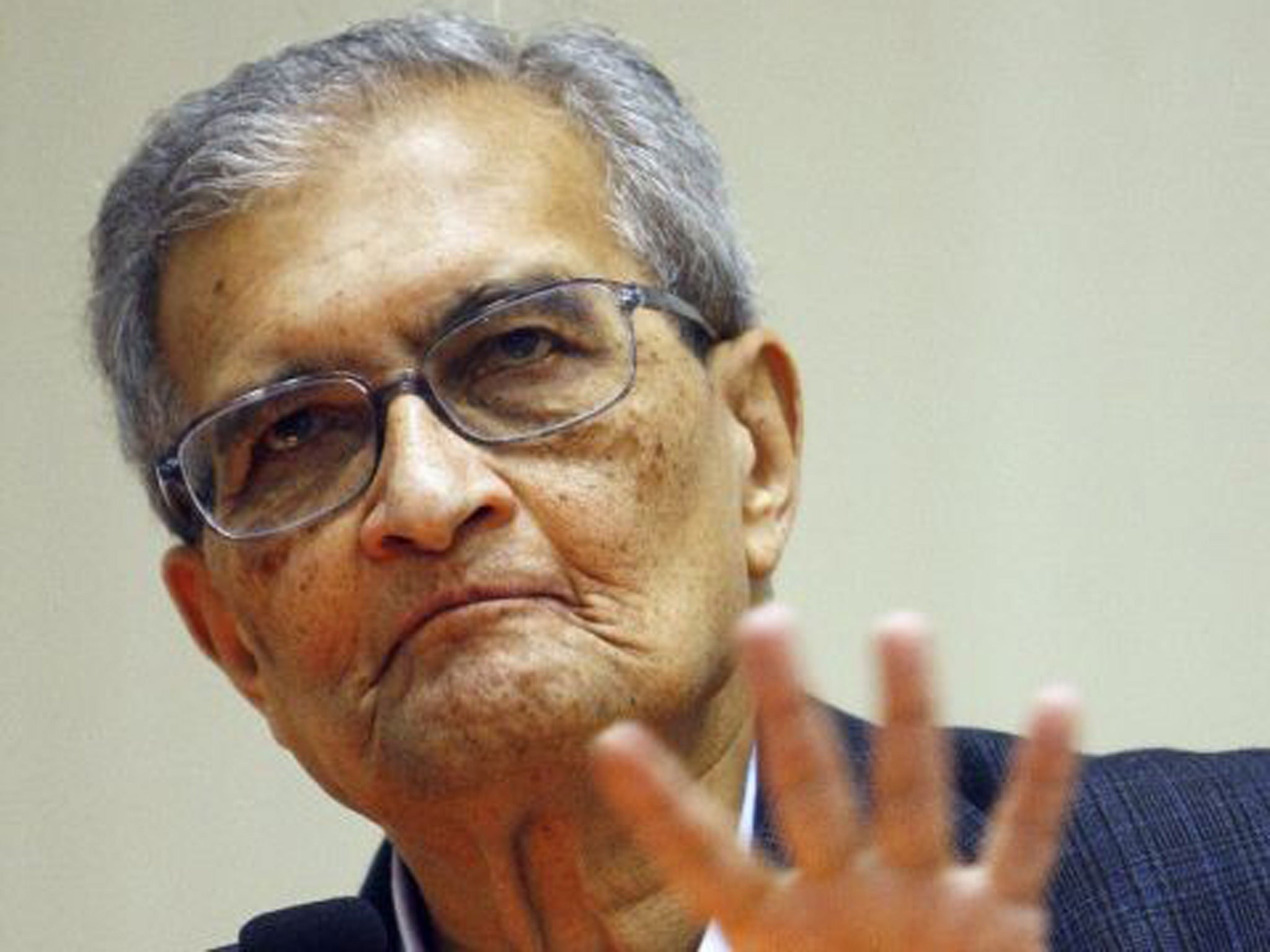The lost girls: Girls are still aborted in states with more educated women, by Amartya Sen

Your support helps us to tell the story
From reproductive rights to climate change to Big Tech, The Independent is on the ground when the story is developing. Whether it's investigating the financials of Elon Musk's pro-Trump PAC or producing our latest documentary, 'The A Word', which shines a light on the American women fighting for reproductive rights, we know how important it is to parse out the facts from the messaging.
At such a critical moment in US history, we need reporters on the ground. Your donation allows us to keep sending journalists to speak to both sides of the story.
The Independent is trusted by Americans across the entire political spectrum. And unlike many other quality news outlets, we choose not to lock Americans out of our reporting and analysis with paywalls. We believe quality journalism should be available to everyone, paid for by those who can afford it.
Your support makes all the difference.A distinct bias of "boy preference" can be found in countries extending from North Africa and West Asia to South Asia, including India, and East Asia, including China. That such discrimination has a place in a large part of the modern world is distressing: the number of "missing women" can be quite large.
When I wrote on "missing women" in the 1980s and the early 1990s, my conclusions were based on the picture that was clear on then, and on data available up to the 1980s. The missing women could be identified then as the result of the differences in mortality rates between men and women. These in turn reflected inequality and sometimes even discrimination, mainly in health care, against girls and women.
Over the last couple of decades those kinds of discrimination have substantially declined in most of the countries I wrote about. Even though female mortality is still higher than male mortality for children in many Indian states, and the gap is even higher for infants in China, nevertheless in both China and India, and indeed in many of the other countries in the region, women now have a substantially higher life expectancy at birth than men.
However, since the 1980s, the wide use of new techniques such as ultrasound scans for determining the sex of foetuses has led to huge and growing numbers of selective abortions of female foetuses, offsetting the gains in declining difference in mortality rates. Selective abortion of female foetuses - what can be called "natality discrimination" - is a kind of high-tech manifestation of preference for boys.
Because of this counteracting influence, the proportion of missing women in the total population has not declined in many countries, including China and India. Women's education, which has been a powerful force in reducing mortality discrimination against women and also in achieving other important social objectives such as the reduction of fertility rates, has not been able to eliminate, at least not yet, natality discrimination.
It is important to ask why women's education and the corresponding enhancement of women's voices and influence in family decisions have not done much to eliminate selective abortion of female foetuses. Educated mothers seem clearly less inclined to neglect girls compared with boys once they have been born; but they seem almost as keen on having boys rather than girls as uneducated mothers are.
Here larger questions of enlightened understanding and scrutiny of traditional values become central and go beyond women's role and influence in family decisions. There seems to be a lack of adequate awareness of the oddity of seeing girls as inferior to boys, and a lack of knowledge about what happens in other places where such discrimination against girls is not present. In China and South Korea, the standard routes to women's empowerment, such as female literacy and economic independence, have resulted in major achievements. But with the new techniques of sex determination of foetuses, discrimination through selective abortion of female foetuses became surprisingly common in both countries, and continues to be very large in China.
Female schooling is one of the most liberating factors in reducing gender discrimination in general, including the neglect of girls compared with boys, which is sharply less for children of educated mothers. Yet the effectiveness of this liberating factor sadly seems very weak in preventing the abortion of female foetuses, at least in the absence of political advocacy.
There is another interesting - and ultimately policy-relevant - empirical fact to note as far as India is concerned. The country splits into two halves as far as the prevalence of selective abortion of females foetuses is concerned, reflected in the lowness of female-male ratio at birth. All the northern and western states, from Punjab and Uttar Pradesh to Gujarat and Maharashtra have much lower female-male ratios at birth than in the European countries, whereas all the states in south and the east, from Kerala and Tamil Nadu to West Bengal and Assam have female-male ratios well within the European range. This calls for research on the impact of the diversity of cultural traditions even within a single country, in this case India.
Amartya Sen, professor of economics and of philosophy at Harvard University, is an Indian-born Nobel laureate.